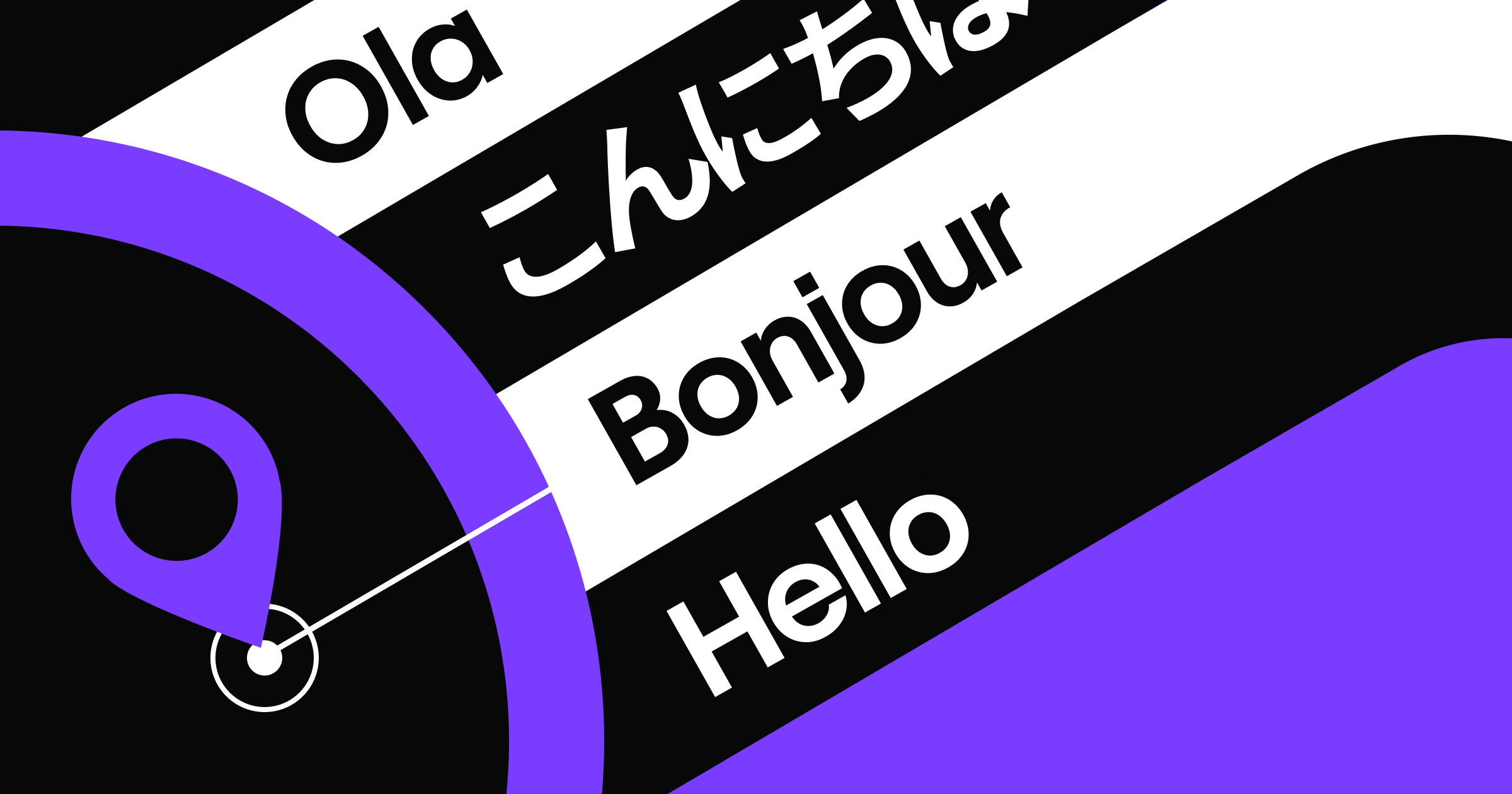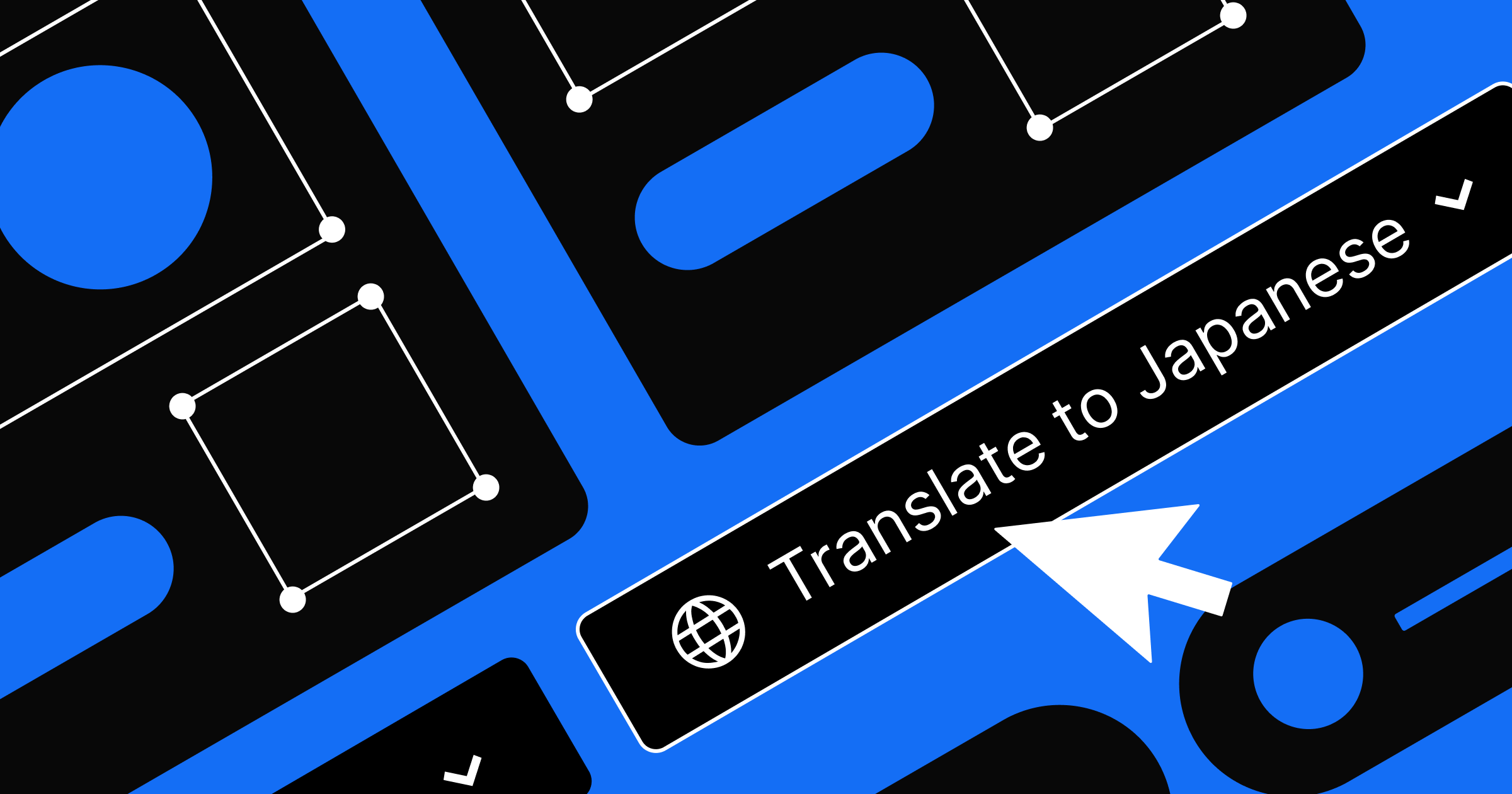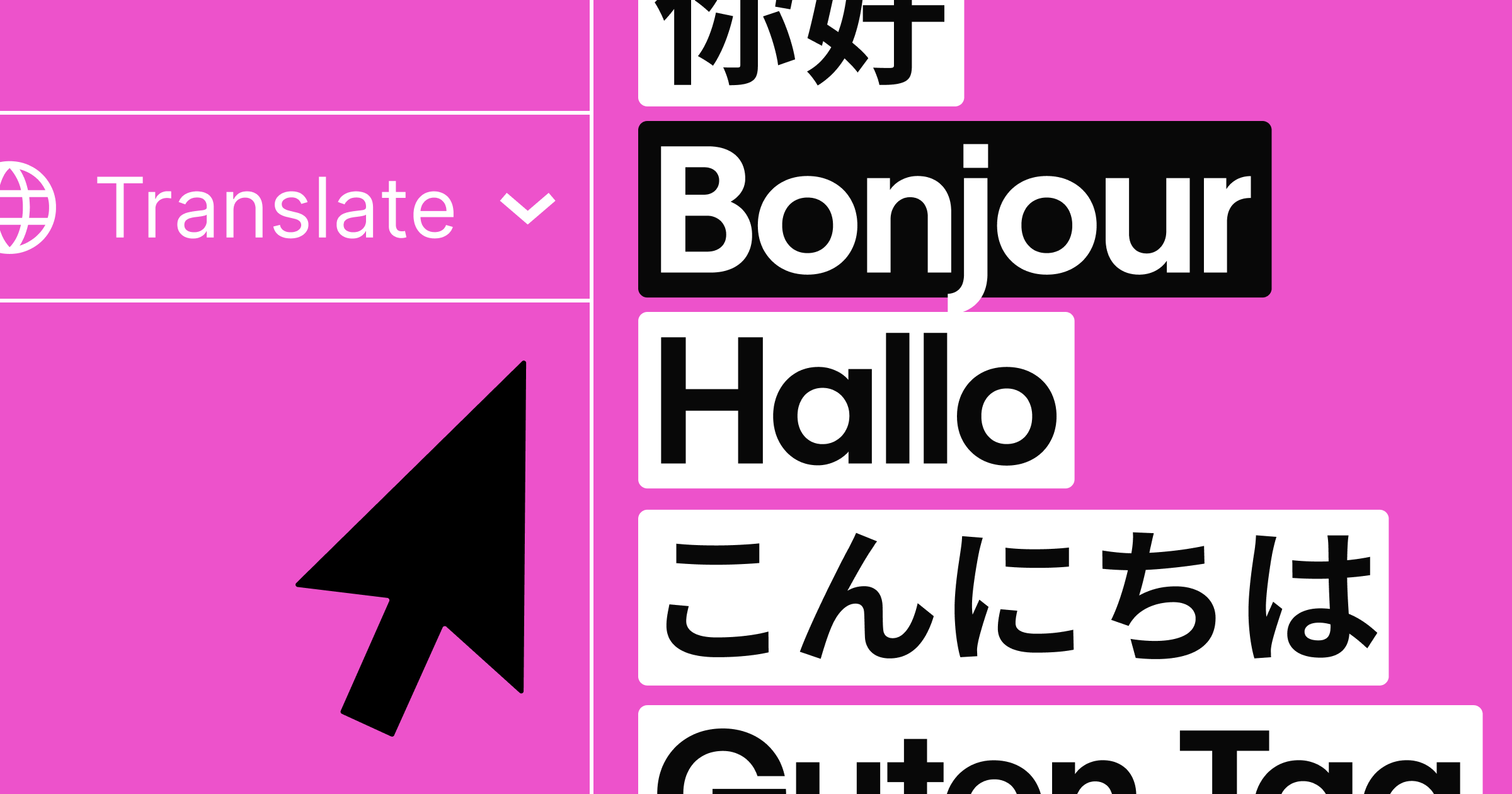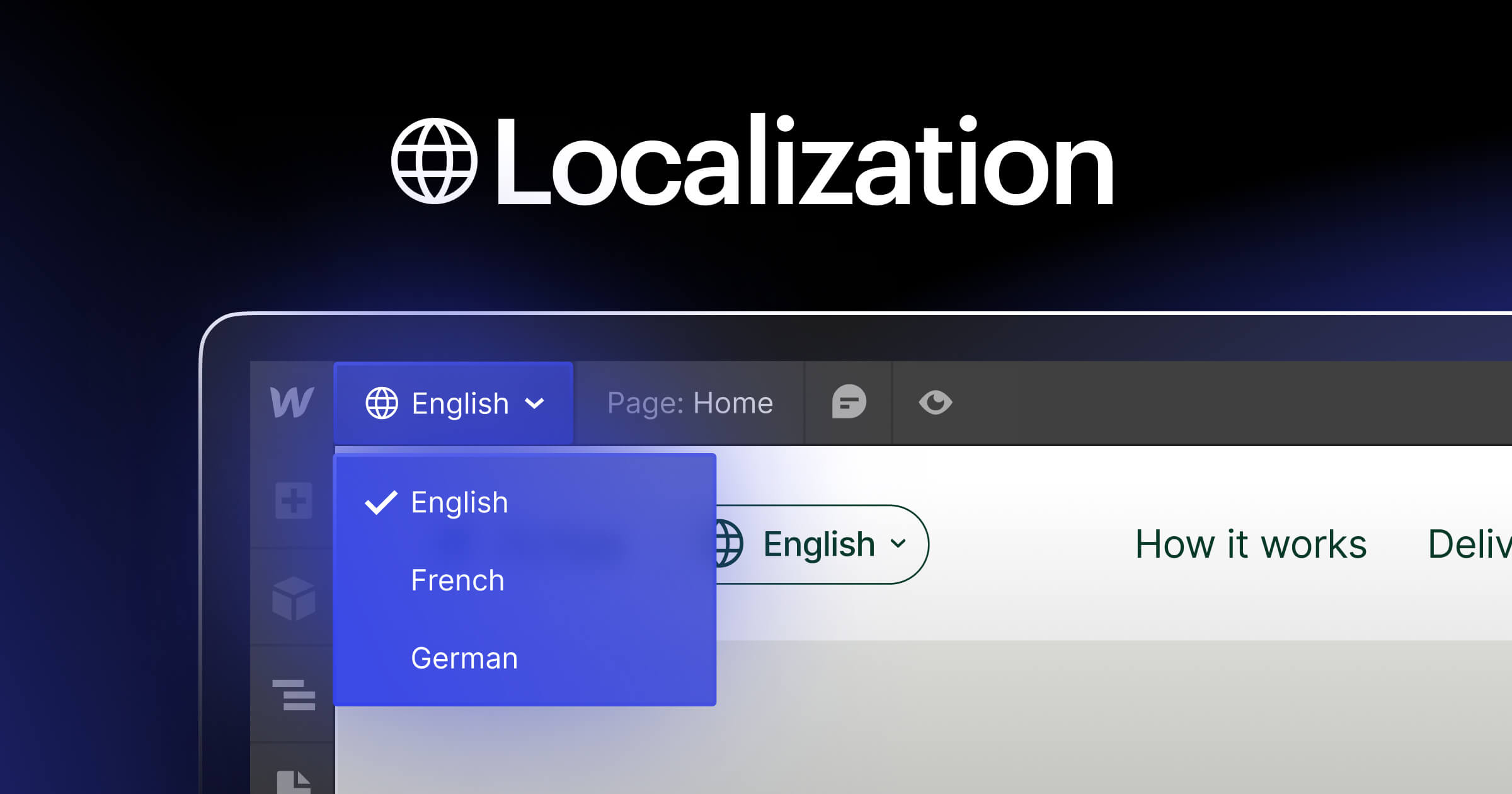To optimize localized content, you need an international SEO strategy.
Reaching an international audience involves tackling significant obstacles, like researching various markets, translating content, and creating dynamic designs. A robust international SEO strategy helps you tackle these challenges.
International SEO is a strategy that optimizes your website for different countries and languages, making the site more visible in search engines for various regions. This strategy involves localizing content and adapting design elements for different locales. To follow through on this strategy, you’ll need to leverage country codes, hreflang tags, and variables to modify URL structures and design elements that vary based on region or language.
5 principles of international SEO
It’s one thing to speak to a single audience that shares a language and culture, but broadening your reach to different demographics requires following these five principles.
1. Use language & country codes
To label content clearly, you need language and country codes, such as “EN” for English or “CA” for Canada. Most businesses follow the ISO 639 specification for language codes and ISO 3166-1 for country codes, but there are reasons to adapt them. For example, Google’s specification uses “pt-BR” to delineate Brazilian Portuguese from Portuguese (pt-PT). This approach localizes their content for a specific region and dialect.
In every part of your global SEO strategy, you’ll use language or country codes to label dynamic content, establish unique URLs, and organize subdomains. For example, many developers opt to create separate subdirectories for each site locale, so when a user navigates to example.com/en/example-file they navigate to the English version, but example.com/pt-br/example-file would go to the Brazilian Portuguese version.
Decide early whether you want to use language or country codes and which specifications you’ll follow.
2. Set URL structures
Every translated page version needs a unique URL or parameter that differentiates it. When localizing your website, there are three generally accepted URL structure types. When you register your domain, know which URL structure you’ll use so you can register the correct top level domains:
- Country code top level domains (ccTLD) are added to the end of your domain in place of .com or .org. For example, example.us would navigate to the US version of an example website.
- Subdomains precede the domain to indicate which site version to display. For example, a website for France would be under fr.example.com, and its Canadian version would be under ca.example.com.
- Subdirectories don’t change the general top level domain (gTLD). Instead, they’re new subfolders under the root directory. For instance, example.com/en/example-file would display the example file in English, while example.com/fr/example-file would navigate to the French version of that file.
3. Include hreflang tags
Hreflang tags are attributes that help search engines identify which languages the page is available in. Regardless of the URL structure you choose, adding hreflang tags helps search engines identify different language variations of your pages. While they can be placed in the <head> element of each page, adding hreflang tags in your XML sitemap is a more efficient and scalable approach — particularly for larger websites with a high number of pages.
Every page must reference its own language and all the other language variations available for that page. Here’s how an hreflang tag would look for a page with an English and Japanese version:
<url>
<loc>https://example.com/example-page</loc>
<xhtml:link rel="alternate" hreflang="en" href="https://example.com/en/example-page"/>
<xhtml:link rel="alternate" hreflang="ja" href="https://example.com/ja/example-page"/>
</url>
Including hreflang tags tells search engines that the page is a version of another page, which helps Google determine which version to index. Hreflang tags also help with canonicalization or deduplication, which impacts your search ranking. Properly labeling duplicate content ensures that search engines index the canonical version and not its duplicates, preventing issues that could impact your page’s authority.
4. Optimize for Google
Google is the most used search engine in nearly every country, so it’s safe to follow Google-centric SEO best practices for all your content, such as writing authoritative content, building backlinks, and using the right keywords. Optimizing for Google also has the added benefit of improving your content for AEO (Answer Engine Optimization).
Use Google site tools to audit your site, which provides Google-specific recommendations to help you improve your search ranking.
5. Create responsive designs
Maintaining your website’s readability and appearance becomes challenging when you change the text orientation, word lengths, or alphabet to suit different languages.
Creating translation-friendly designs is much like creating mobile-friendly designs. Use fluid grids and relative sizes and positions, so that when a page is translated, text, images, and layouts transition to new orientations and alphabets seamlessly.
Always test your designs pre-launch to ensure translated content appears as intended.



















Unlock growth with SEO
Join Webflow and leading growth agency Graphite as they discuss actionable insights for scaling and achieving growth with SEO
International SEO vs. local SEO
Both international and local SEO involve localizing content, but they each have different goals. International SEO involves translating content so it meets a global audience’s language needs, while local SEO adjusts content to various audiences by mentioning local landmarks, events, and people.
International SEO is a development strategy that uses schemas, different URL structures, and variables that affect content like currencies to render translated content dynamically. If done right, translated content displays just as well as native content. Changes to text orientation don’t disrupt design elements, and longer words don’t become unreadable in buttons and other UI elements.
Local SEO uses similar tools like schemas and variables to alter content to work for a regional audience. It changes the message and presentation of your content to suit that locality, such as recommending local restaurants and referencing a specific city name.
An international SEO strategy in 8 steps
The following international SEO strategy starts with research, moves to implementation and translations, and then focuses on monitoring results. Following this strategy, you can structure your efforts into a sound, repeatable process that works for you and your website.
1. Analyze your international organic traffic
Your first step is to understand where your opportunities are. Check your website traffic to determine which international audiences provide the largest search volume. Select these as your target audiences and then learn about their languages.
Pay special attention to the intricate differences between languages. For example:
- Alphabets — Arabic, Japanese, Thai, and many more use non-Latin alphabets.
- Text orientation — Arabic and Hebrew use a right-to-left orientation, with special rules for numbers and icons.
- Word length — German and French words are often longer than their English counterparts, while in Chinese, many are just one or two characters.
These considerations affect your headings, text blocks, and UI elements. Do your research to discover how these languages influence your designs.
2. Research your audience
Every geographic region includes people with unique expectations, experiences, and cultures — one universal marketing technique won’t work for everyone. Use a tool like Semrush to perform keyword research to determine how term usage changes in each area. Send out surveys, interview potential customers, and review research so you can pivot your strategy to resonate with customers in each region.
3. Set your international SEO goals
Create measurable goals for your project, such as increasing traffic or conversions. For example, if you’re marketing a video editing tool, you might set these key performance indicators (KPIs) for relevant web traffic:
- 5% increase in conversions in the target market
- 15% increase in traffic from the target market
- 20% CTR rates
These preliminary goals ensure you gain measurable traction in the target market. They create a firm foundation you can build on to reach an even broader audience.
4. Set up the appropriate URL structure
Decide which URL structure to use and register the relevant domains. For example, if you’re using the ccTLD URL structure, you’d register example.ar, example.ja, and example.de for Arabic, Japanese, and German sites.
If you’re using Webflow Localization, you’ll default to the subdirectory structure, so you only need your top-level domain — all the locales fit under it, such as example.com/ar or example.com/ja.
5. Build responsive pages
Build out your designs to ensure they render translated content correctly. How you’ll do this depends on your development approach, but here are some ideas:
- Use responsive layouts to structure your content into consistent rows, grids, and blocks, regardless of which language they’re in.
- Use conditionals or dynamic elements to incorporate translated content and style it appropriately.
- Use hreflang tags in your sitemap to label each page by language.
- Define variables for button text, navigation, and any textual UI elements that use dynamic content.
- Use relative links to stay within the localized site. For example, use
<a href=”/directory/example-page.html”>rather than<a href=”https://www.website.us.com/directory/example-page.html”>.
6. Adapt your content for cultural preferences
Before you send your content out for translation, review it to ensure it’s appropriate for all your audiences. Look for jargon that won’t make sense or mentions of products that aren’t sold in other countries.
Pay special attention to attempts you make at humor. Every culture follows different conventions, and a funny joke in one region might appear unintelligible or offensive in another.
While you’re at it, take note of all the places you use dates, times, and currencies. After translations are complete, check these details to update them and ensure prices are correct.
7. Localization
Human translation is still the best option for top-notch localization, but machine-learning services like AWS and Lokalise are constantly improving. Whichever method you use, be careful when you export your content. It needs to be as similar as possible to the original version in your development environment.
When you get your translated files back, upload them into a test branch and carefully review them. Look for inconsistencies, broken formatting, and disrupted design elements. After you’ve fixed any issues, merge the branch and publish it. Review the live site to ensure no new problems appear.
8. Measure and analyze performance
Watch the KPIs you established at the beginning of the process to see how close you’re getting to your goals. Remember that SEO strategies often take a few months to produce results, so be patient. If you’re not seeing the gains you were hoping for after several months, try new advertising techniques that point people to your localized content.
Unlock global opportunities with international SEO
Adopting an international SEO strategy is the first step toward unlocking global audiences, but it requires a significant time and energy investment. That’s why Webflow offers end-to-end site localization and integrations with translation apps like Lokalise, giving you the tools you need to localize and optimize your content seamlessly.
Check out the Localization overview at Webflow University to learn how it works.

Customize your site for visitors around the world
From design to translation to best-in-class SEO, Webflow Localization is an end-to-end solution for customizing your site for a worldwide audience.































